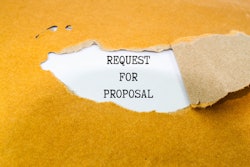
 Photo: Courtesy of Chardia Christophe-Garcia
Photo: Courtesy of Chardia Christophe-Garcia
Over the last three years, the world has completely changed. We are navigating through a global health pandemic while combatting racially motivated acts that cause civil unrest. As event professionals, it's important to recognize the changes happening in the world, and be proactive in thinking through how this affects the events we produce.
See below for a few questions every event marketer should ask pre-event in order to build a successful audience strategy.
1. Have the goals of this event been clearly defined, from both a client-facing and internal standpoint?
I can't tell you how many times over the years I've worked on an event and midway through, the goals change. For your marketing/audience development team to be effective, it's important to be clear who the target audience is, what the audience description states on your sponsor contracts, and what's attainable or not based on your internal and external database of leads.
Ask yourself some tough questions: Do you have enough leads internally that match the target? How has this audience performed in the past, and do you have the runway to achieve success? If you commit to an audience goal you can't deliver on, you risk losing your client for good. If you over-market to an audience that does not align with the goals, you risk having them opt out for good. It’s important to be nimble with clients and manage expectations. Remember, short-term wins do not guarantee long-term success.
2. Have you carefully outlined your customer service plan—before, during, and after the event?
Customer service is single-handedly the most underrated part of the event marketing process. We're all familiar with the dreaded customer service inbox. Someone on the team is responsible for checking that box regularly and replying to all inquiries. But how many times has this been put on the back burner when more important priorities arise?
This is a mistake. Now more than ever, people want to feel heard. Even if you don’t have the answer to their question, a simple response letting them know you’re looking into it goes a very long way.
My team recently hosted an event in Tel Aviv for young entrepreneurs traveling across 30-plus countries. Not only were we checking the customer service box daily pre-event, but we worked with our logistics lead who created a “Know Before You Go” guide that outlined important tips ahead of travel, including the exact address of each experience, health and safety requirements, tips on ride-sharing opportunities, weather updates to help attendees pack, and more. During the event, we also enabled a dedicated communication forum and one-on-one mobile chat group where we shared all important reminders about panels/performances and answered attendee questions directly. It got to the point where attendees knew us by name and the post-event feedback reflected that.
When you talk about building a community among an audience, this is exactly how you accomplish that. Treat every attendee like a keynote speaker, and you’ll be surprised at their loyalty to the brand and how this action indirectly creates an unofficial team of brand ambassadors.
3. Have you defined your DEI strategy?
Diversity, equity, and inclusion are items that should be carefully woven into the fabric of your organization. However, as an events team, you have a unique opportunity to go bolder and more direct to ensure your events look like the world we live in.
Where do you start? Build diverse panels. An audience responds best when they feel they can identify with those on the stage, even in an aspirational way. Too often at many organizations, the title of the panelist seems to take precedence over the other factors that appeal to an audience.
For example, if you're hosting an event for CIOs but you know that there's a systemic lack of diverse faces within that community, it's important to rethink the strategy and instead set up a panel with maybe two CIOs and two SVPs/VPs of color. These executives would be just as qualified and the conversation would not only aide in giving these individuals a platform for visibility, but also allow attendees to see themselves in the leaders portrayed, making the content more relatable. This can directly influence their reason to attend and aide in diversity among registrants as well.
4. Have you created an experience you would leave your house for?
Gone are the days of the random happy hours after business hours, where people would just show up. Attendees are being a lot more careful with their time and commitments—especially with so many now working from home. With a renewed focus on returning to in-person experiences, it’s important to have transparent conversations with your clients and leadership about the name of the event, the branding elements, the copywriting, the food, the music, and more. Every detail matters, and event marketers will need all the help they can get to sell an experience that attendees are willing to leave their homes to join.
It’s important to man your audience development team with the resources they need to drive home the significance of participating. The reality is, if speakers get confirmed too late, if the agenda is not finalized until one-week pre-event, if the dining moments are not truly moments, if the performers aren’t locked, all these things hurt the event marketing process. Selling your experience becomes much harder, and you risk your goal not being met. It’s important to remember this and work as a team to ensure most elements are ready to go ahead of time, which will allow for effective promotion.
5. Have you allocated an appropriate budget for testing?
With the constant changes surrounding how consumers receive information, it’s important to carve out a piece of your marketing budget to allow for testing. Often if the current marketing plan is working, the budget for testing gets put on the back burner. This is a missed opportunity and a very reactive approach.
You should be testing as often as possible, especially if your events cater to different audience demos. For example, a promotion on TikTok may perform well for your young professional community but not as well for your C-suite audience. Some may say that’s a given, but testing will allow you to look at this a little deeper.
According to Hootsuite, “Topics related to investing, cryptocurrency, and all things finance had a huge year. Compared to 2020, views for videos tagged #NFT grew by a brain-melting 93,000%. The #crypto hashtag also exploded, garnering 1.9 billion videos.” These are the kinds of insights that would make testing promotion for a wealth summit, for example, worthwhile!
Taking a proactive approach to testing new marketing channels saves you time and resources down the line. It will also give you a competitive advantage. As you continue to test and study what works best for your audience, you become the brand that sets the trends—not follows them.
6. Have you determined the partners that best align with the community you serve?
Partnerships can play a big role in helping you reach a new audience. So instead of starting mid-event, determine ahead of time which associations align with your target, and see if they’d be open to sending an email to their community directly. Sometimes this can be done via a barter agreement, and other times it comes at a cost.
Either way, knowing who your potential partners are at the start can significantly increase your reach and give you a card to play should your direct audience be less responsive.
7. Finally, have you checked on your staff?
Working for events is not for the weak of heart! It looks glamorous, but there’s a lot that people don’t see like the long nights, long days, missed lunches, constant fire drills, and more. It is so important to make sure the staff working pre-event, during the event, and post-event have everything they need to ensure a successful experience for all in attendance.
Outside of developing a staffing plan, it’s important to think through every layer of the attendee experience from a staffing perspective. What if your lead planner gets sick and can no longer work the event? Has the documentation been clearly outlined so another lead on the team can seamlessly jump in to help? If more attendees show up and your room is set for a smaller count, are you prepared to add more seats? Is this a call that can be made in real-time, or only in advance? Are you staffed effectively so your on-site team can take lunch once a day without losing coverage?
These are all things that matter and play a big role in the integrity of your event. Remember, this machine runs because of the hard work your staff puts in. If they crumble, your event will crumble. Don’t be disillusioned to think your attendees can’t pick up on a pissed-off staff member. You don’t want anything interfering with the good vibes you worked hard to create at this event. Take care of your team, and I guarantee they will take care of the brand.
Chardia Christophe-Garcia is a marketing and events professional with over 14 years of experience working in publishing and media. She is currently the executive director of audience and community marketing at Forbes, where she manages the strategy, marketing, and delegate recruitment for more than 60 ForbesLIVE events, including the Forbes Power Women's Summit, the Forbes Under 30 Summit, and more. She’s previously worked in event marketing at NewBay Media and American Express Publishing, and she lives in the Bronx, New York.



![Pag 4571[3]](https://img.bizbash.com/files/base/bizbash/bzb/image/2024/06/PAG_4571_3_.665f33fa2b275.png?auto=format%2Ccompress&fit=crop&h=100&q=70&w=100)







![Pag 4571[3]](https://img.bizbash.com/files/base/bizbash/bzb/image/2024/06/PAG_4571_3_.665f33fa2b275.png?auto=format%2Ccompress&fit=crop&h=112&q=70&w=112)







